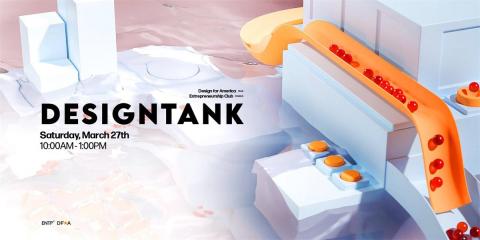By: Yvonne Pan
In March, the Entrepreneurship Club (ENTP+) and Case Western Reserve University’s Design for America studio co-hosted DesignTank, a three-hour workshop about human-centered design and business model refinement where attendees explored a real-world problem with Cleveland-based nonprofit, University Settlement.
Since 1926, University Settlement has supported Slavic Village youth, seniors and families through community programs that combat hunger, assist with transition-in-place housing and host a summer camp and an adult wellness program.
University Settlement introduced a problem that the four DesignTank teams had to work together to solve. Teams consisted of students from various backgrounds including engineering, industrial design and sustainable solutions from CWRU and the Cleveland Institute of Art.
The problem presented involved NRP Group, an affordable housing developer, who would construct a four story, mixed-use, mixed-income housing complex with the first floor reserved for programming and services. Moving to the new space would leave University Settlement’s current buildings, Main and Mead, vacant.
Due to liability and safety issues, the buildings cannot remain unoccupied for more than a couple of days, so competing teams developed a cost-effective and efficient way to use the space and increase wealth in North Broadway and the Slavic Village, where the buildings are located.
The winning team designed HopeDesk, converting the Mead building into a venue that provides workshops on topics like financial literacy, computer science and college applications for high school students and strives to create long-term generational wealth within the community. Given the community it is located in, HopeDesk focuses on high school graduation rates as a key performance indicator. The team determined it was best to sell the Main building.
The HopeDesk team consisted of three CWRU students—third-year student Ammar Kazi, first-year student Elwin He, fourth-year student Katherine Yan—and doctorate candidate Jane Ann Day.
Their solution is customized to the neighborhood that houses 22,000 people and was the most economically distressed community in the nation after the housing crisis in 2008, a far cry from the thriving working class community of 100,000 residents at the end of World War II. Still, the resiliency of the neighborhood is evidenced through recent developments like an investment in Fleet Avenue that has attracted restaurants, bike shops, music shops, dog training facilities and nonprofits.
The first portion of the workshop was led by DFA, discussing human-centered idea discovery and design. Afterwards, Paul Gehrig, the founder of Modal Design and former project consultant at JumpStart, translated design into a business model and value proposition. ENTP+ then helped teams refine their presentations for the judges.
Judges looked at how well teams use the outlined processes to develop their solution, how well the solutions fit the problem space and how feasible it would be to implement, as well as the clarity of the presentation.
“This is not about building a building for us, this is about resurrecting a community,” Earl Pike, the executive director of University Settlement said.
University Settlement aims to focus on sustainability by remediating the toxic sites and having LEED ID+C certification for their buildings. Furthermore, it is working with Mark L. Joseph, PhD, the founding director of the National Initiative on Mixed-Income Communities at the Jack, Joseph and Morton Mandel School of Applied Social Sciences to ensure community engagement and maximize public benefits. US will also undergo a three-year training and policy review process for Sanctuary Model certification, a trauma responsive accreditation.


